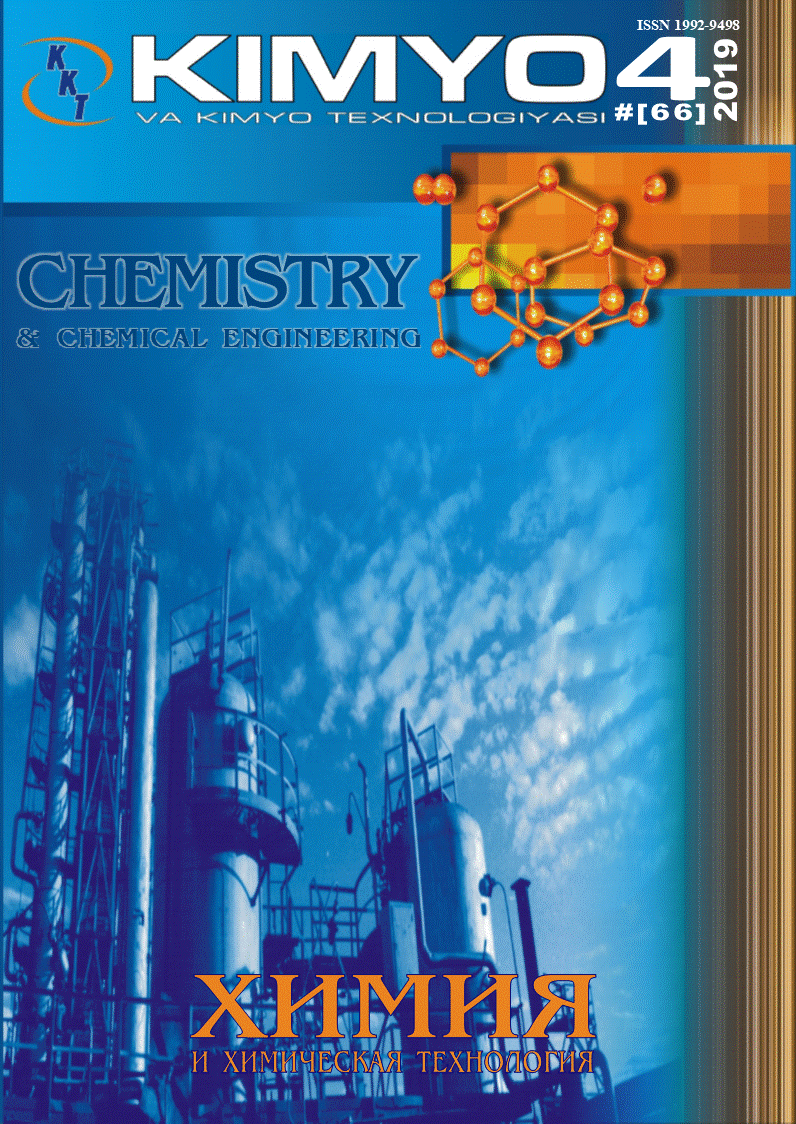
Abstract
The aim of this work is to study the radical copolymerization of acrylonitrile with 1-chloro-3-piperidin-2-propylacrylate and to study the structure and properties of the synthesized copolymers. Ammonium persulfate was used as the radical initiator. Water and dimethylformamide were used as solvents. Under these conditions the process proceeds heterogeneously in water, and homogeneously with high speed in dimethylformamide. The synthesis rate of the 1-chloro-3-piperidino-2-propylacrylate and acrylonitrile copolymers increases with increasing temperature in the studied solvents. Experimental studies have shown that copolymerization does not proceed in the absence of the initiator and this indicates a radical nature of the reaction. The structure of synthesized compounds was confirmed by IR spectral analyses. The participation of multiple bonds of both monomers during copolymerization was determined. The composition of copolymers has been determined which indicates that the copolymer formed at early stages is enriched with 1-chloro-3-piperidino-2- propylacrylate units. The values of the monomers relative activities were calculated by Feinemann-Ross method. The found values of copolymerization constants are r1=0.28, r2=0.62 and the constant value of the copolymerization product is less than unity proving both types of formed polymer radicals react much faster with foreign monomer than with their own.
Recommended Citation
MAHKAMOVA, Latofat; MUTALOV, Shukhrat; and MAKSUMOVA, Oytura
(2024)
"SYNTHESIS OF BINARY ACRYLONITRILE COPOLYMERS,"
CHEMISTRY AND CHEMICAL ENGINEERING: Vol. 2022:
No.
4, Article 14.
DOI: https://doi.org/10.70189/1992-9498.1564
Available at:
https://cce.researchcommons.org/journal/vol2022/iss4/14
